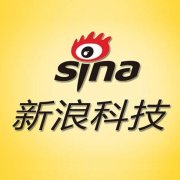直播时间:2024年11月29日(周五)20:00
直播平台:
?
科学网APP
https://weibo.com/l/wblive/p/show/1022:2321325106027992318056
(科学网微博直播间链接)
科学网微博
科学网视频号
【直播简介】
北京时间2024年11月29日晚八点,iCANX Talks 第214期邀请到了香港城市大学副教授王骋作为主讲嘉宾,香港科技大学研究助理教授薛莹、北京大学助理教授舒浩文也将进行分享!北京大学助理教授胡耀文,华中科技大学教授刘阳担任研讨嘉宾,香港城市大学副教授王骋担任主持人。
这将是一场汇聚顶尖学者的盛会,共同探讨前沿科技与学术挑战!更多精彩,敬请期待!
【嘉宾介绍】
Cheng Wang
香港城市大学
Integrated lithium niobate microwave and millimeter-wave photonics
【ABSTRACT】
Integrated microwave photonics (MWP) is a powerful technology that leverages integrated photonic technologies for the generation, transmission, and manipulation of microwave signals in chip-scale optical systems. In this talk, I will discuss our recent efforts on developing a thin-film lithium niobate (TFLN) MWP platform that simultaneously features efficient, linear, and high-speed electro-optic modulators for high-fidelity microwave-optic conversion, low-loss functional photonic networks that can be configured for a variety of signal processing tasks, as well as large-scale, low-cost manufacturability. I will first discuss a variety of high-performance device-level building blocks, including low-loss photonic waveguides and resonators (0.03 dB/cm), broadband electro-optic modulators covering the entire millimeter-wave and partly terahertz bands (up to 500 GHz), broadband power-efficient frequency comb sources, as well as ultra-compact inverse-designed photonic elements. Building upon this platform, we further demonstrate high-performance MWP system-level applications, including ultrahigh-speed analog signal processing, integrated photonic millimeter-wave radars, and on-chip optical vector analyzers.
集成微波光子学(MWP)致力于在芯片尺度的光学系统中生成、传输和操纵微波信号。本报告主要介绍我们最近开发的薄膜铌酸锂(TFLN)微波光子学平台,该平台同时具备用于高保真度微波光学转换的高速电光调制器,可实现各种信号处理任务的低损耗功能光学网络,以及大规模、低成本的晶圆级加工。我将首先讨论多种性能优异的器件级模块,包括低损耗光波导(0.03 dB/cm)和微腔,调制频率达500 GHz、覆盖整个毫米波及部分太赫兹频段的电光调制器,低功耗、宽频谱的电光频率梳源,以及超紧凑的反向设计光子元件。在此平台的基础上,我们将进一步展示高性能微波光子系统应用,包括超高速模拟信号处理、集成光子毫米波雷达和原位光学矢量分析仪。
【BIOGRAPHY】
Dr. Cheng Wang is an Associate Professor of Electrical Engineering at City University of Hong Kong. He received his B.S. degree in Microelectronics from Tsinghua University in 2012, and his S.M. (2015) and Ph.D. (2017) degrees, both in Electrical Engineering from Harvard University, supervised by Prof. Marko Lon?ar. After conducting research as a postdoctoral fellow at Harvard, he joined City University of Hong Kong as an Assistant Professor in 2018. Prof. Wang's research focuses on the design and nanofabrication technology of integrated photonic devices and circuits. His current research effort focuses on realizing integrated lithium niobate photonic circuits for applications in optical communications, millimeter-wave/terahertz technologies, nonlinear optics, and quantum photonics. Since joining CityU, Prof. Wang has received a number of awards in research, including the NSFC Excellent Young Scientist Fund (HK & Macau) (2019), the Croucher Innovation Award (2020), and 35 Innovators Under 35 (China), MIT Technology Review (2021).
王骋,香港城市大学电机工程学系副教授。2012年本科毕业于清华大学微纳电子系,2017年获哈佛大学电子工程博士学位,2018年加入香港城市大学。主要研究方向包括薄膜铌酸锂光子器件及其在光通信和微波光子领域的应用,在Nature、Nature Photonics、Nature Communications、Advanced Materials等国际期刊上发表50余篇SCI论文,获评麻省理工科技评论35岁以下创新35人(中国区)、裘槎基金会前瞻科研大奖。
薛莹
香港科技大学
Monolithic integration of III-V on Si for large-scale silicon photonics
【ABSTRACT】
Silicon photonics (Si-photonics), leveraging the mature Si integrated circuit (IC) infrastructure, plays a pivotal role in overcoming communication bottleneck, and serves as an enabling technology for emerging fields such as supercomputers, neural and quantum networks, and sensing. While Si-based passive components have been well-established on Si-photonics platforms, integrating III-V active devices on Si has remained the major challenge for Si-photonics. Monolithic integration by hetero-epitaxy will benefit the integration of efficient III-V lasers on Si in a low cost, high throughput and large bandwidth manner, and unleash the full advantages of Si-photonics.
In this talk, we will discuss III-V on Si devices by various selective epitaxy methods with a focus on a novel selective epitaxy method named lateral aspect ratio trapping (LART). The core concept of LART involves the in-plane and intimate placement of Si and III-V, eliminating the need for III-V buffers, mitigating threading dislocations (TDs), and providing an elegant solution for efficient coupling between III-V and Si. We will showcase the advancements made in III-V lasers and photodetectors on silicon-on-insulator (SOI) using the LART technique.
硅光子学(Si-photonics)利用成熟的硅集成电路(IC)基础设施,在克服通信瓶颈方面发挥着关键作用,并成为新兴领域,如超级计算机、神经网络和量子网络和传感技术的重要支撑技术。虽然基于硅的无源器件已在硅光子平台上得到了广泛应用,但将III-V族有源器件集成在硅上仍是硅光子学的主要挑战。通过异质外延实现的单片集成可实现低成本、高产量和大带宽的硅基III-V激光器的高效集成,从而充分发挥硅光子学的优势。
我们将探讨通过多种选区外延方法制备的硅基III-V器件,重点介绍一种侧向选区外延方法(LART)。LART的核心理念是通过在同一平面内将硅与III-V材料紧密放置,从而无需III-V缓冲层,减少位错密度,并为III-V与硅的高效耦合提供了一种优雅的解决方案。我们将展示利用LART技术在绝缘体上硅(SOI)上制备III-V激光器和光探测器所取得的进展。
【BIOGRAPHY】
Dr. Ying, Xue received her B.S. degree in Microelectronics from Shandong University in 2017, and her Ph.D. degree in Electronic and Computer Engineering from the Hong Kong University of Science and Technology (HKUST) in 2022, respectively. She is currently a Research Assistant Professor in HKUST. Her research interest has been in the area of III-V optoelectronic devices and their integration with silicon photonics. She is the winner of Optica Foundation Challenge 2023 and Rising Star Women in Engineering 2023. She has authored 60 papers in leading technical journals and conferences including Optica, Laser & Photonics Review, and Photonics Research. Her work has been featured by multiple technology medias such as Optics & photonics news, Phys.org, Semiconductor Today, Science Daily, Compound Semiconductor and EurekAlert.
薛莹博士于2017年获得山东大学微电子学士学位,并于2022年获得香港科技大学电子与计算机工程博士学位。目前,她担任香港科技大学的研究助理教授。她的主要研究方向是III-V族光电子器件及其与硅光子的集成。她是2023年Optica Foundation Challenge的获奖者和2023年“Rising Star of Women in Engineering”的获得者。薛博士已在Optica、Light: Science & Applications、Laser & Photonics Review、Photonics Research等国际期刊和会议上发表了60篇论文。她的研究成果多次被Optics & Photonics News、Semiconductor Today等媒体报道。
Haowen Shu
北京大学
Highly Paralleled Integrated Photonic Information Systems
【ABSTRACT】
Integrated optoelectronics, with its advantages of small size, high bandwidth, and low energy consumption, combined with large-scale manufacturing capabilities, has achieved performance breakthroughs in various application areas such as high-speed interconnects, sensing, and computing. It is seen as a key technology and development direction for the future integration and broadband expansion of information systems. However, there remains significant room for optimization in terms of system scalability. Developing more reasonable on-chip system architectures that meet application requirements is also crucial for the realization of high-performance on-chip systems.In this talk, we will present several solutions based on high-parallel integrated optoelectronic systems, drawing from recent research. The application targets include high-speed optical communication, optical signal processing, lidar, and photonic computing, among others. The core of the architecture lies in leveraging the high scalability of on-chip systems to overcome the traditional conflict between processing speed and accuracy in optoelectronic systems, effectively expanding the information throughput of on-chip systems.
集成光电子学利用其小尺寸、高带宽及低能耗的优势,结合大规模量产能力,在高速互联、传感、计算等诸多应用领域实现了性能突破,是未来信息系统集成化和宽带化的重要手段与发展方向。然而针对于系统的可扩展性问题,依然存在较大的优化空间,如何针对系统应用需求提出更为合理的片上系统架构,也是高性能片上系统实现的关键。
本次报告我们将基于近期的研究,介绍多个基于高并行集成光电子系统的解决方案,应用目标涉及高速光通信,光信号处理,激光雷达,光子计算等。架构核心在于利用片上的高可扩展性,突破传统光电子系统在信息处理速度与精度的矛盾,有效扩展片上系统的信息吞吐量。
【BIOGRAPHY】
Dr. Haowen Shu obtained his Bachelor's degree from Beijing University of Posts and Telecommunications (BUPT) in 2015 and his Ph.D. in Communication and Information Systems from Peking University in 2020. From 2020 to 2023, he conducted postdoctoral research at Peking University. He is currently an Assistant Professor at the School of Electronics, Peking University. His primary research areas include silicon-based integrated optoelectronic information systems, device performance optimization, and system architecture design. His application directions cover data center communication, microwave/mm-wave photonic signal processing, and high-performance sensing and computing. In recent years, Dr. Shu has led several projects as the Principal Investigator, including the National Key R&D Program of China for Young Scientists and the Outstanding Young Scientists Fund of the National Natural Science Foundation of China. He has published over 50 academic papers in related fields, including articles as first or corresponding (co)author in journals such as Nature, Nature Photonics, Nature Communications, Light: Science & Applications, and Science Advances. His research achievements have been recognized by awards such as the “Top Ten Optical Advances in China,” and he has been honored with the PhotoniX Prize by the Chinese Society of Optical Engineering.
舒浩文博士于2015年获得北京邮电大学学士学位,并于2020年获得北京大学通信与信息系统博士学位,此后于2020年至2023年在北京大学电子学院从事博士后研究,并入选“中国博士后创新人才支持计划”。他目前为北京大学电子学院助理教授,主要研究领域为硅基集成光电子信息系统,包括器件性能优化与系统架构设计等,应用方向为数据中心通信、微波/毫米波光子信号处理、高性能传感与计算等。近年来,作为项目负责人主持国家重点研发计划青年科学家项目、国家自然科学基金优秀青年科学基金项目等。在相关方向发表学术论文50余篇,其中以第一/通讯(共同)作者发表《Nature》,《Nature Photonics》,《Nature Communications》,《Light:Science & Applications》,《Science Advances》等期刊论文,研究成果入选“中国光学十大进展”等奖项,个人入选中国光学工程学会“PhotoniX Prize”。

“掌”握科技鲜闻 (微信搜索techsina或扫描左侧二维码关注)

















